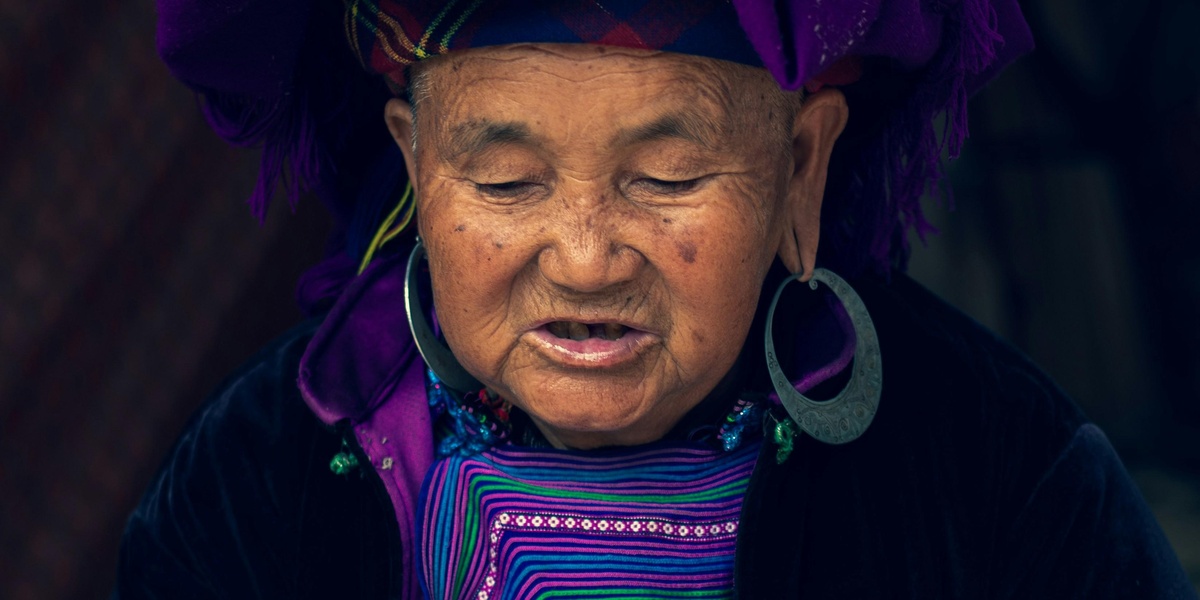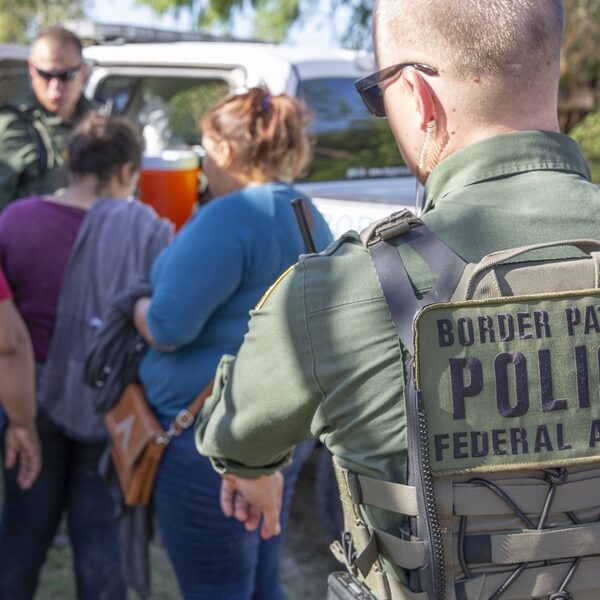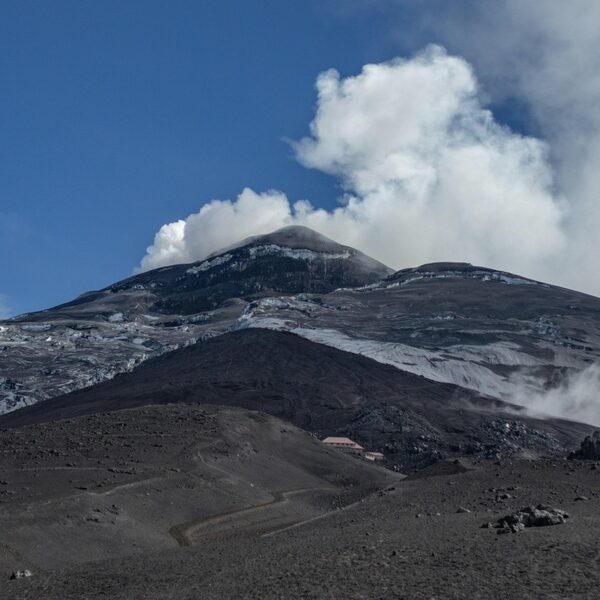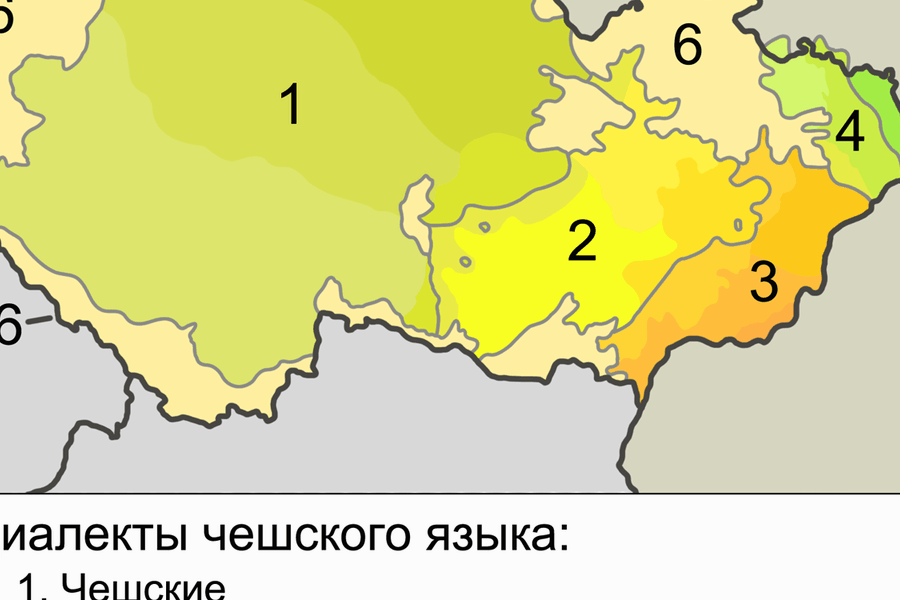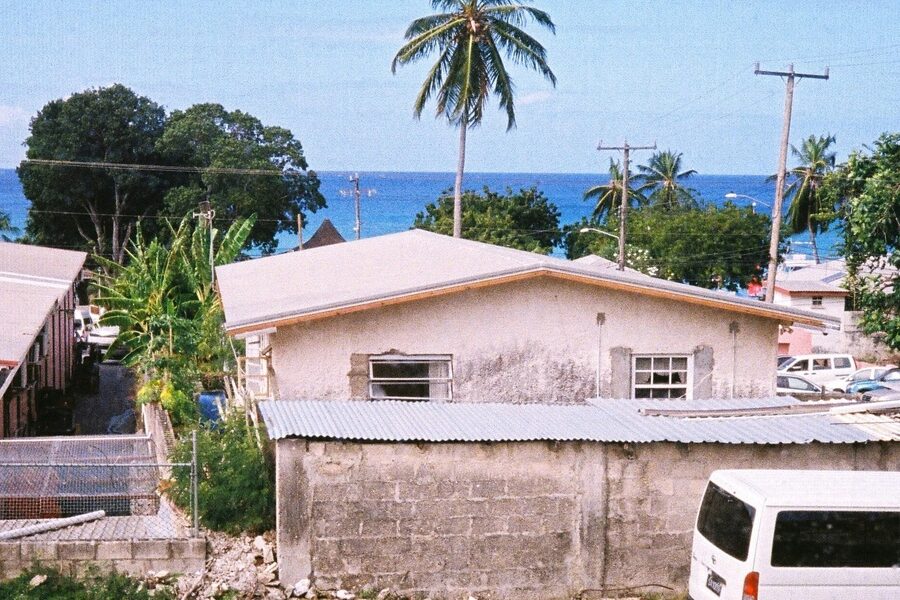Colombia’s geography — from Andean highlands and Caribbean coast to Amazon rainforest and Pacific lowlands — shapes a deep patchwork of Indigenous communities and languages. Many towns and regions preserve distinct tongues that reflect local history, culture and environmental knowledge.
There are 60 Indigenous Languages in Colombia, ranging from Achagua to Zenú. Each entry is organized with Endonym,Speakers (year),Regions so you can see local names, estimated speaker counts and where each language is spoken — you’ll find all of that below.
How recent are the speaker counts and where do they come from?
Speaker numbers come from a mix of national censuses, academic fieldwork and language surveys; the year shown in the “Speakers (year)” column indicates the source date. For some languages the data are estimates or older, so treat figures as a snapshot rather than a fixed total and check linked sources or recent studies for updates.
How can I respectfully support or learn one of these languages?
Look for community-led programs, local schools, published materials created or endorsed by speakers, and documentation projects; if you volunteer or donate, do so through groups that prioritize community control and benefit-sharing. Even basic efforts — learning greetings, buying materials produced by speakers, or amplifying community voices — help sustain language vitality.
Indigenous Languages in Colombia
| Name | Endonym | Speakers (year) | Regions |
|---|---|---|---|
| Achagua | Achawa | 760 (2018) | Meta department, along the Uva and Meta rivers |
| Andoque | Andoque | 610 (2007) | Amazonas department, near the Caquetá River |
| Arhuaco | Ika | 27,000 (2018) | Sierra Nevada de Santa Marta (Cesar, Magdalena departments) |
| Awa Pit | Awapit | 12,900 (2007) | Nariño and Putumayo departments, on the border with Ecuador |
| Barasana | Barasano, Paneroa | 1,890 (2001) | Vaupés department, along the Pirá-Paraná River |
| Barí | Barí ara | 5,900 (2010) | Norte de Santander, Catatumbo region near Venezuela |
| Bora | Miamunaa | 2,330 (2007) | Amazonas department, along the Igará-Paraná and Caquetá rivers |
| Cabiyarí | Kawiyarí | 310 (2007) | Vaupés department, along the Cananarí River |
| Carapana | Muteamasa, Ukopinõpõna | 650 (2007) | Vaupés department, along the Caquetá and Vaupés rivers |
| Carijona | Karijona | 30 (2007) | Guaviare and Vaupés departments |
| Cofán | A’ingae | 1,460 (2010) | Putumayo department, on the border with Ecuador |
| Cubeo | Pamiwa | 6,720 (2007) | Vaupés, Guainía, and Guaviare departments |
| Cuiba | Wamonae | 2,270 (2001) | Casanare, Vichada, and Arauca departments |
| Curripaco | Kurripako | 12,500 (2007) | Guainía, Vichada, and Guaviare departments |
| Damana | Damana | 2,800 (2007) | Sierra Nevada de Santa Marta (Magdalena, Cesar, La Guajira) |
| Desano | Wirá poã | 2,700 (2007) | Vaupés department, along the Vaupés River |
| Emberá Catío | Eyabida | 15,000 (2001) | Antioquia, Córdoba, and Chocó departments |
| Emberá Chamí | Ēbēra, Dobida | 11,000 (2001) | Risaralda, Caldas, and Antioquia departments |
| Eperara Siapidara | Epena Pedee | 3,550 (2010) | Cauca, Nariño, and Valle del Cauca departments |
| Guambiano | Namtrik | 23,500 (2007) | Cauca department, near Silvia |
| Guayabero | Jiw | 1,060 (2007) | Meta and Guaviare departments |
| Hitnü | Jitnu | 450 (2018) | Arauca department, near the Ele and Lipa rivers |
| Inga | Inga Kichwa | 17,800 (2010) | Putumayo, Nariño, and Caquetá departments |
| Kamsá | Kamsá, Camsá | 4,000 (2000) | Putumayo department, in the Sibundoy Valley |
| Kankuamo | Kankuamo | 0 (extinct) | Sierra Nevada de Santa Marta (Cesar department) |
| Kogui | Kággaba | 11,000 (2018) | Sierra Nevada de Santa Marta (Magdalena, La Guajira, Cesar) |
| Koreguaje | Korebaju | 2,100 (2007) | Caquetá and Putumayo departments, along the Orteguaza River |
| Macuna | Yebámasa | 1,100 (2007) | Vaupés department, along the Apaporis and Pirá-Paraná rivers |
| Muinane | Muinane | 150 (2007) | Amazonas department, along the Caquetá River |
| Muisca | Muysccubun | 0 (extinct) | Cundinamarca and Boyacá departments (Andean highlands) |
| Nasa Yuwe | Nasa Yuwe | 137,000 (2010) | Cauca, Huila, and Valle del Cauca departments |
| Nonuya | Nonuya | 5 (2007) | Amazonas department, near the Caquetá River |
| Nukak | Nukak | 400 (2005) | Guaviare department |
| Ocaina | Okaina | 12 (2007) | Amazonas department, along the Igará-Paraná River |
| Piapoco | Wennai, Tsase | 6,380 (2007) | Guainía and Vichada departments, along the Guaviare River |
| Piratapuyo | Wa’íkâná | 1,330 (2007) | Vaupés department, along the Papurí River |
| Pisamira | Pisamira | 25 (2007) | Vaupés department, along the Vaupés River |
| Puinave | Wãênsöjöt | 8,300 (2007) | Guainía department, near the Inírida River |
| Sáliba | Sáliba | 1,300 (2008) | Casanare and Vichada departments, along the Meta River |
| Sikuani | Sikuani | 20,000 (2008) | Vichada, Meta, Arauca, Guainía, and Guaviare departments |
| Siona | Baicoca | 500 (2018) | Putumayo department, along the Putumayo River |
| Siriano | Siriano | 730 (2007) | Vaupés department, near the Paca and Viña rivers |
| Tanimuka-Letuama | Tanimuka, Letuama | 560 (2007) | Amazonas and Vaupés departments, along the Apaporis River |
| Tariana | Tariana | 100 (2007) | Vaupés department, along the Vaupés River |
| Tatuyo | Pamoa | 400 (2007) | Vaupés department, along the Pirá-Paraná and Papurí rivers |
| Ticuna | Duüxügu | 32,600 (2007) | Amazonas department, in the Amazonian Trapezoid |
| Tinigua | Tinigua | 1 (2013) | Meta department, Sierra de la Macarena |
| Tucano | Dahseyé, Ye’pâ-masa | 10,300 (2007) | Vaupés department, along the Vaupés and Papurí rivers |
| Tuyuca | Dochkafuara, Tejoka | 570 (2007) | Vaupés department, along the Tiquié, Papurí and Inambú rivers |
| U’wa | U’wa tunebo | 7,300 (2010) | Boyacá, Santander, and Norte de Santander departments |
| Wounaan | Wounaan meu | 10,000 (2018) | Chocó and Valle del Cauca departments, along the San Juan River |
| Wayuu | Wayuunaiki | 270,000 (2014) | La Guajira department |
| Witoto | Murui Muinane | 6,230 (2007) | Amazonas and Putumayo departments |
| Yagua | Nihamwo | 300 (2007) | Amazonas department, near Leticia |
| Yucuna | Kamejeya | 2,100 (2007) | Amazonas department, along the Mirití-Paraná River |
| Yuhup | Yuhup | 400 (2007) | Vaupés and Guaviare departments, in the Apaporis river basin |
| Yurutí | Wajiaraye | 500 (2007) | Vaupés department, along the Pacá and Papurí rivers |
| Zenú | Zenú | 0 (extinct) | Córdoba and Sucre departments |
| Chimila | Ette Taara | 900 (2006) | Magdalena department, near the Ariguaní River |
| Pijao | Pijao | 0 (extinct) | Tolima and Huila departments |
Images and Descriptions
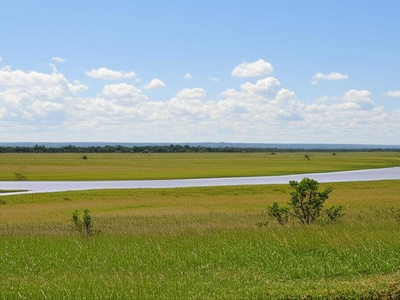
Achagua
An Arawakan language spoken in the eastern plains (Llanos). It is severely endangered, with most speakers being elderly. The language is known for its complex verb morphology and nasal harmony, a feature common in the region’s languages.

Andoque
A language isolate, meaning it has no known relatives. Andoque is a tonal language and possesses a system of evidentiality, where speakers must specify how they know the information they are conveying, adding a fascinating layer of precision.
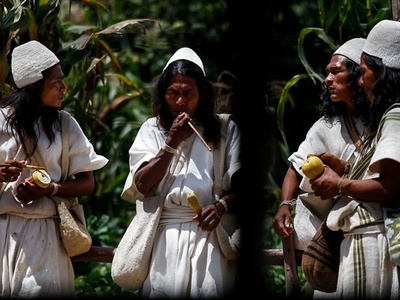
Arhuaco
A Chibchan language of the Sierra Nevada. Speakers, known as the Iku people, consider their language a vital part of their spiritual identity and connection to the sacred mountains. It is considered a vibrant and stable language.
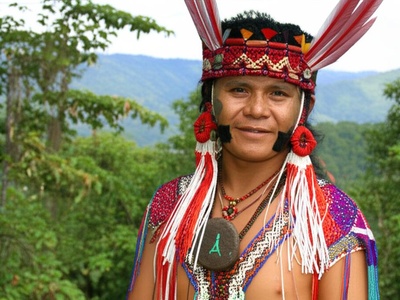
Awa Pit
A Barbacoan language spoken by the Awá people. Its vitality is strong, as it is used daily in many communities. The language is central to preserving their culture and knowledge of the Pacific Andean foothills’ unique ecosystem.
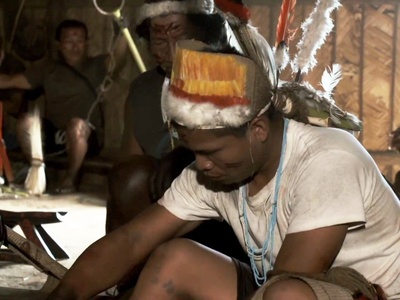
Barasana
An Eastern Tucanoan language from the Amazon region. Like other languages in the area, it is characterized by linguistic exogamy, where individuals must marry someone who speaks a different language, promoting multilingualism within communities.
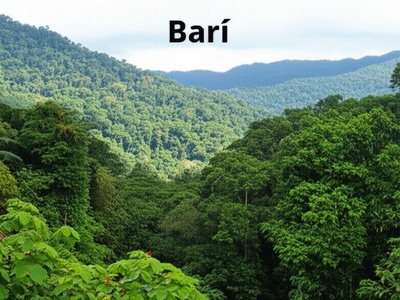
Barí
A Chibchan language spoken in the dense rainforests of the Catatumbo region. The Barí community has fought to protect their territory and language, which remains a key component of their cultural resilience and identity against outside pressures.

Bora
A Boran language also spoken in Peru. Bora is a tonal language with a highly complex grammatical gender system, including classifications for animacy, shape, and consistency. It is a vital part of their rich oral tradition.

Cabiyarí
A critically endangered Arawakan language spoken in the Amazon. Its speaker base is very small and aging, facing intense pressure from more dominant regional languages. Efforts are underway to document the language before it vanishes completely.

Carapana
An Eastern Tucanoan language of the Amazon. Its speakers practice linguistic exogamy, meaning they must marry outside their language group. This has created a multilingual society where understanding multiple languages is common from a young age.

Carijona
A Cariban language on the verge of extinction, with only a few elderly speakers remaining. The Carijona people have been displaced by conflict and outside pressures, severely impacting the intergenerational transmission of their language and ancestral culture.
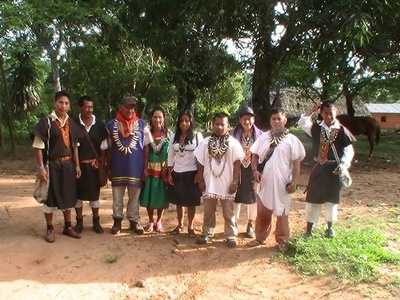
Cofán
A language isolate (or Cofan) spoken in the Amazon rainforest. The language is integral to the Cofán’s identity and their deep knowledge of medicinal plants. Despite pressures from oil extraction, the community maintains strong language revitalization programs.
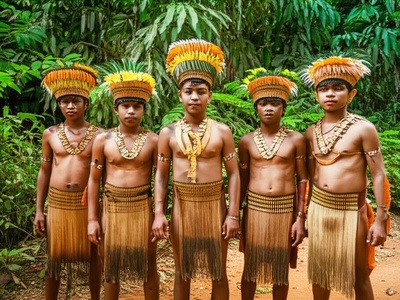
Cubeo
An Eastern Tucanoan language spoken in the Vaupés region. Unusually for a Tucanoan language, the Cubeo do not strictly practice linguistic exogamy, which has helped maintain a larger and more cohesive group of speakers compared to their neighbors.
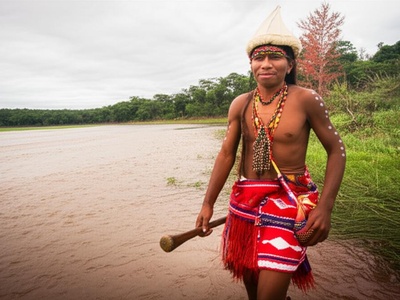
Cuiba
A Guahiban language of the Llanos Orientales. The Cuiba are traditionally nomadic, and their language reflects a deep connection to the savannas and rivers of their territory. It is considered endangered due to displacement and socio-economic pressures.
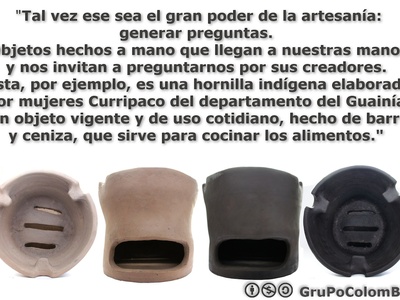
Curripaco
An Arawakan language spoken in the Orinoco basin, with speakers also in Venezuela and Brazil. It is part of a dialect continuum with Baniwa and is known for its complex phonology, including a rare linguolabial stop.
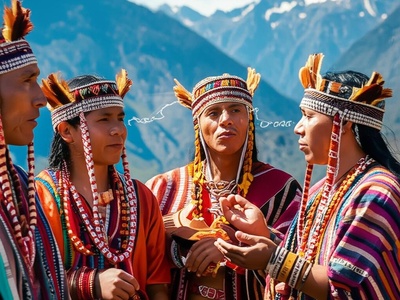
Damana
A Chibchan language spoken by the Wiwa people of the Sierra Nevada. The language is deeply intertwined with their spiritual beliefs and worldview. Though endangered, there are active efforts within the community to promote its use among younger generations.
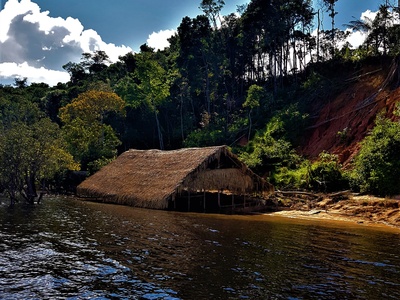
Desano
An Eastern Tucanoan language from the Amazon. The Desano people are part of the Vaupés multilingual system, where language defines identity and marriage partners must speak a different language, making most speakers bilingual or trilingual.
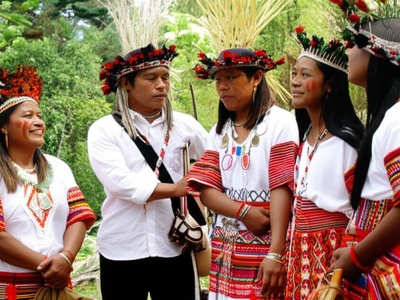
Emberá Catío
A variety of the Emberá language from the Chocoan family. Spoken in the northern Andes and Caribbean lowlands, it is one of the most widely spoken indigenous languages in Colombia, though it faces challenges from displacement and integration.
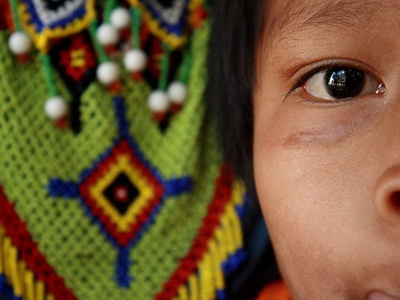
Emberá Chamí
A Chocoan language spoken in the western Andes. The Chamí people are known for their distinct cultural practices, and their language is a cornerstone of their identity. Revitalization efforts focus on bilingual education in community schools.
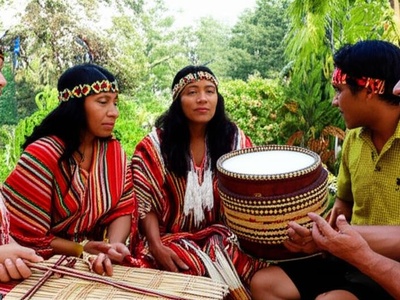
Eperara Siapidara
A Chocoan language spoken along the Pacific coast. It is closely related to Emberá but is considered a distinct language. The speakers maintain strong oral traditions, using their language to pass down stories, songs, and knowledge.
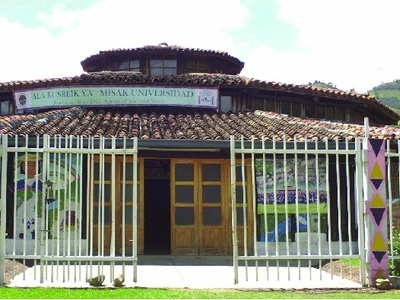
Guambiano
A Barbacoan language spoken by the Misak people in the Andean highlands. The language is a symbol of their cultural and political resistance. It has a strong presence in the community, supported by its own educational system.

Guayabero
A Guahiban language of the Orinoco basin. Speakers have a semi-nomadic tradition, and their language is rich in vocabulary related to the natural world. It is endangered, facing pressure from Spanish and the dominant Sikuani language.
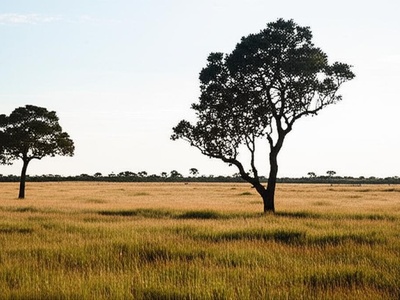
Hitnü
A Guahiban language of the eastern plains. It is closely related to Sikuani but distinct. The community is relatively small and has faced significant disruption from the Colombian conflict, placing the language at high risk of disappearing.

Inga
A Quechuan language, related to the Kichwa of Ecuador. It has two main dialects: Highland and Jungle. The language is a legacy of Incan influence in the region and serves as a vital marker of Inga identity.
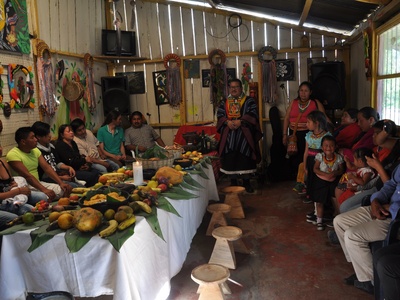
Kamsá
A language isolate spoken in the Andean highlands. The language is unique to the Sibundoy Valley and is not related to any of its neighbors. It is central to the Kamsá people’s annual carnival and religious ceremonies.
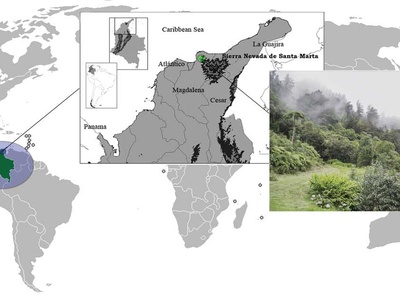
Kankuamo
An extinct Chibchan language. The Kankuamo people lost their language in the 20th century but are now undergoing a process of ethnic and cultural revitalization, which includes efforts to reconstruct and reclaim their ancestral tongue.
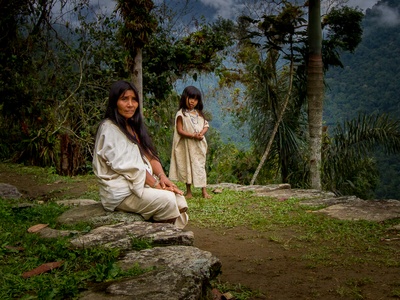
Kogui
A Chibchan language spoken by the Kogi people, who are renowned for their traditionalist worldview. The language is integral to their culture and spiritual practices and is considered vigorous, passed down through generations in isolated communities.

Koreguaje
A Western Tucanoan language spoken in the Amazon foothills. Unlike its eastern relatives, its speakers do not practice linguistic exogamy. The language is threatened by habitat loss and encroachment on their ancestral lands by colonists.

Macuna
An Eastern Tucanoan language. Macuna speakers are part of the Vaupés multilingual cultural area, where language is a key marker of paternal descent. Their rich oral tradition includes complex myths and ceremonial chants spoken only in Macuna.
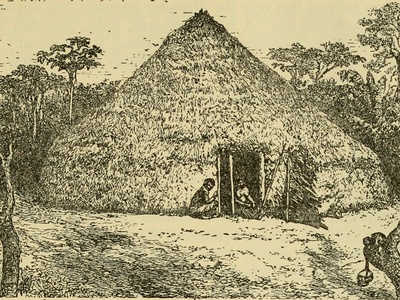
Muinane
A Boran language, closely related to Bora. With only a small number of speakers, it is critically endangered. The language reflects a deep knowledge of the Amazonian ecosystem and is essential for the community’s traditional stories and songs.
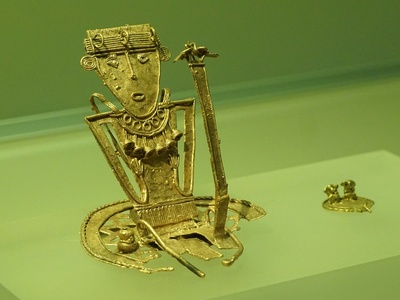
Muisca
An extinct Chibchan language, once spoken by the advanced Muisca civilization. While no native speakers remain, the language is being revitalized by descendants through academic study, community workshops, and ceremonial use, representing a powerful cultural reclamation.
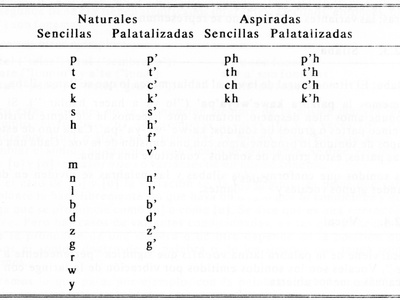
Nasa Yuwe
A language isolate (or Paezan) spoken by the Nasa people, one of Colombia’s largest indigenous groups. The language is a symbol of their political and territorial struggle. It is actively taught in schools and used in media.

Nonuya
A Witotoan language on the brink of extinction, with only a handful of elderly speakers remaining. The Nonuya people were decimated during the Amazon rubber boom, and the loss of their language represents a tragic loss of culture.
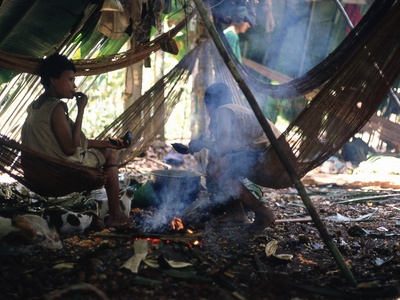
Nukak
A Nadahup (Makú) language spoken by one of the last nomadic groups to be contacted in Colombia. Their language is uniquely adapted to a hunter-gatherer lifestyle. It is critically endangered due to disease, displacement, and forced sedentarism.

Ocaina
A Witotoan language, also spoken in Peru, with very few speakers left in Colombia. The language is nearly extinct due to the dominance of the related Huitoto language and Spanish, as well as historical violence in the region.
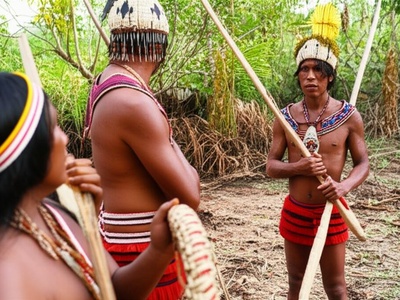
Piapoco
An Arawakan language of the Orinoco basin. The Piapoco have a strong cultural identity, and their language is used in daily life, storytelling, and music. It is related to Achagua and is considered a relatively stable language.
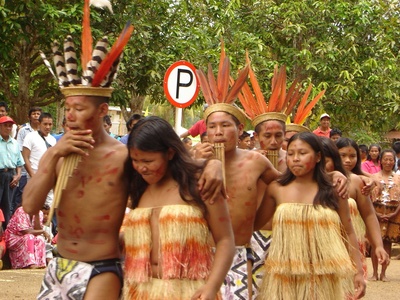
Piratapuyo
An Eastern Tucanoan language spoken in the Vaupés region and across the border in Brazil. As part of the region’s system of linguistic exogamy, speakers are typically multilingual, fluently speaking several other Tucanoan languages from neighboring groups.

Pisamira
A critically endangered Eastern Tucanoan language with very few remaining speakers. The community has largely shifted to speaking other dominant indigenous languages of the region, such as Tucano or Spanish, leading to its rapid decline.
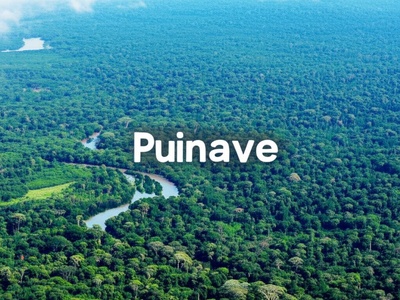
Puinave
A language isolate, also known as Makú, though it is not part of the Nadahup (Makú) family. It is a vigorous language, widely used in the communities around the city of Inírida, and is even spoken by non-Puinave people.
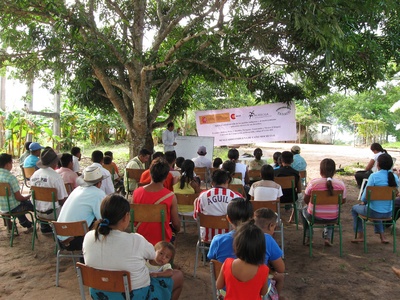
Sáliba
A Saliban language, forming a small language family with Piaroa. Most speakers are in the Orocué municipality. Though endangered, the community has established language nests and educational programs to ensure its transmission to younger generations.
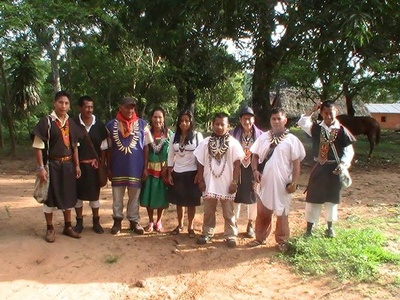
Sikuani
The most widely spoken indigenous language of the Orinoco plains (Llanos), belonging to the Guahiban family. It serves as a lingua franca among different indigenous groups in the region and has several distinct dialects across its vast territory.

Siona
A Western Tucanoan language spoken on the border with Ecuador. The Siona people are known for their spiritual connection with yagé (ayahuasca), and their language is essential for the songs and knowledge related to these ceremonies.
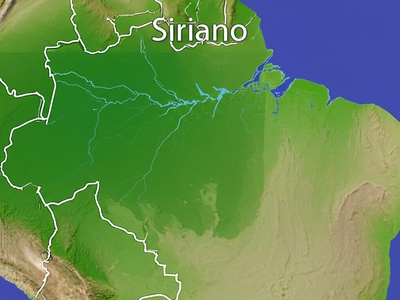
Siriano
An Eastern Tucanoan language of the Vaupés region. Its speakers participate in the linguistic exogamy system common to the area, resulting in widespread multilingualism. The language is closely related to Desano and Tucano but is distinct.
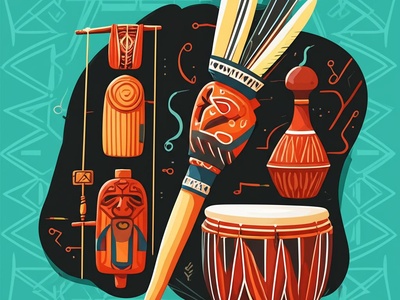
Tanimuka-Letuama
A Western Tucanoan language with two main dialects, Tanimuka and Letuama. The language is known for its complex tonal system and is used in the community’s traditional ceremonies, which involve sacred musical instruments and chants.
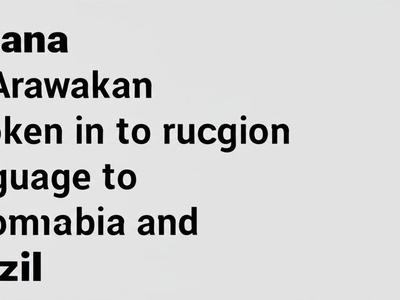
Tariana
An Arawakan language spoken in a region dominated by Tucanoan languages. Uniquely, most speakers are not native but learned it as a second language due to marriage patterns. It is critically endangered in Colombia and Brazil.
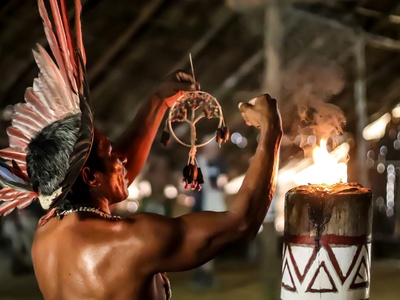
Tatuyo
An Eastern Tucanoan language. Like its neighbors, Tatuyo speakers practice linguistic exogamy, marrying speakers of other languages. This fosters a multilingual environment where children grow up speaking three or more languages fluently.
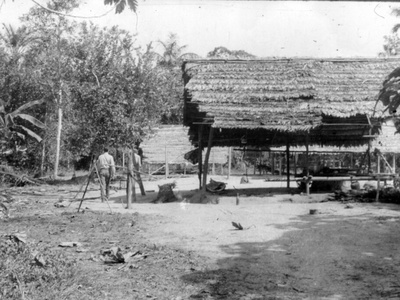
Ticuna
A language isolate spoken by the most numerous indigenous group in the Colombian Amazon. It is also spoken in Brazil and Peru. The language is tonal and remains vibrant, widely used in all domains of community life.
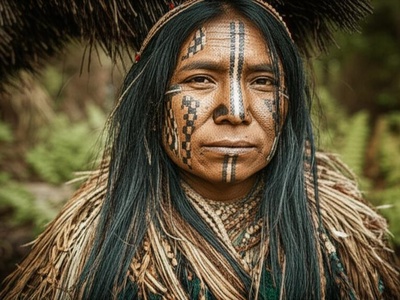
Tinigua
A critically endangered language isolate with possibly only one elderly male speaker left. The Tinigua people were decimated by disease and conflict, and the imminent loss of their language represents the end of an entire linguistic family.
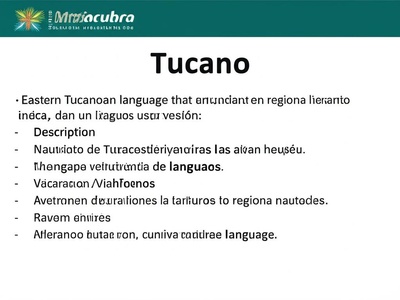
Tucano
An Eastern Tucanoan language that serves as a lingua franca in the Vaupés region. Due to its regional importance, many non-Tucano people learn it, and it is a key language in the area’s multilingual social system.
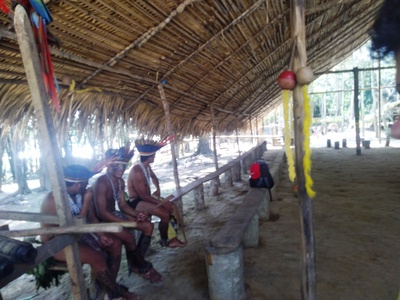
Tuyuca
An Eastern Tucanoan language famous for its complex grammar. It is said to have up to 140 grammatical genders or noun classifiers. Like its neighbors, its speakers are part of the exogamous marriage system of the Vaupés.
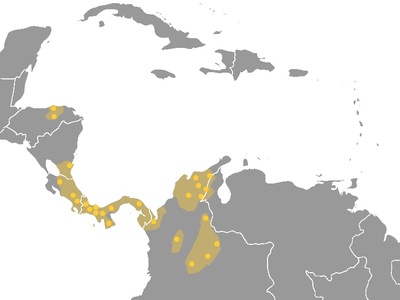
U’wa
A Chibchan language spoken in the cloud forests of the Eastern Andes. The U’wa consider themselves guardians of the earth, and their language is deeply connected to this sacred worldview. It remains a vital part of daily life.
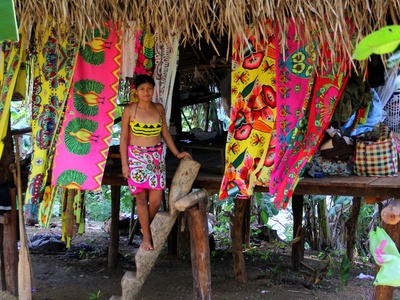
Wounaan
A Chocoan language, also spoken in Panama. The Wounaan are known for their intricate basketry and woodcarvings, and their language is central to the transmission of these artistic traditions and their oral history.
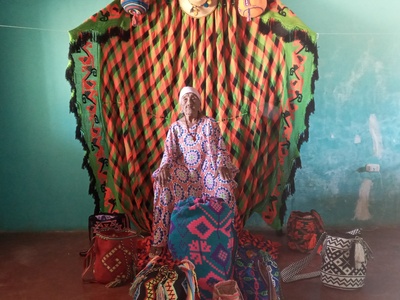
Wayuu
An Arawakan language spoken by the largest indigenous group in Colombia. It is a vibrant language, used in all aspects of life and supported by radio programs and bilingual education, despite facing challenges from Spanish.
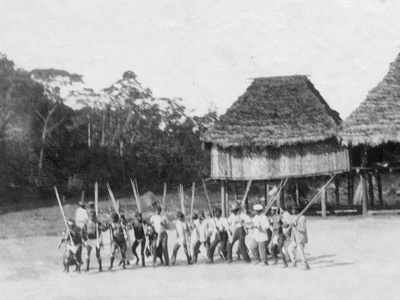
Witoto
A Witotoan macrolanguage with several dialects (like Murui and Minica). The Witoto people suffered immensely during the rubber boom, but their language remains a symbol of their resilience, preserving complex mythologies and historical narratives.
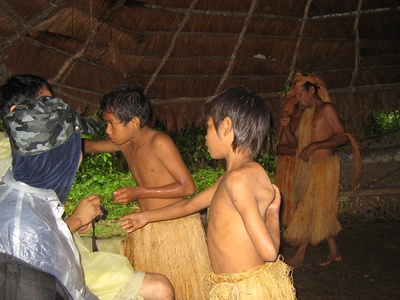
Yagua
A Peba-Yaguan language primarily spoken in Peru, with a small community in Colombia. The language is known for its complex verb system where a single word can express a complete sentence. It is highly endangered in Colombia.
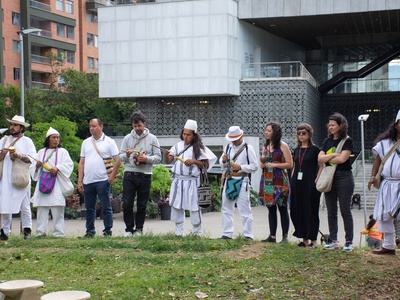
Yucuna
An Arawakan language with some Tucanoan influence. The Yucuna people have a complex ceremonial system tied to their language, including the “Baile del Muñeco” (Doll’s Dance), which reenacts their creation myths through chants and rituals.
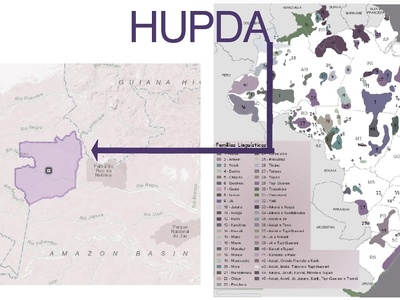
Yuhup
A Nadahup (Makú) language spoken by a semi-nomadic group of hunter-gatherers in the Amazon rainforest. The language is adapted to their mobile lifestyle and is critically endangered due to contact-related pressures and habitat loss.
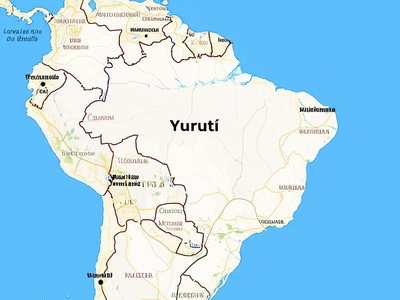
Yurutí
An Eastern Tucanoan language. The Yurutí community participates in the Vaupés tradition of linguistic exogamy, where language defines kinship and marriage choices, creating a deeply multilingual and interconnected social fabric in the region.
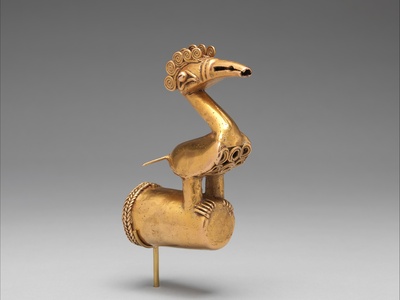
Zenú
An extinct language, likely of the Chocoan family. The Zenú people were famous for their pre-Columbian goldwork and hydraulic engineering. Today, the community is reclaiming its ethnic identity, though the language has been completely lost.

Chimila
A Chibchan language spoken by the Ette Ennaka people. It is severely endangered, having been suppressed for generations. The language is notable for its complex phonology and is the focus of revitalization efforts by community elders.

Pijao
An extinct Cariban language spoken by the historically formidable Pijao people. They fiercely resisted Spanish colonization for decades. Today, their descendants are in a process of ethnic reconstruction, though their original language has not survived.

